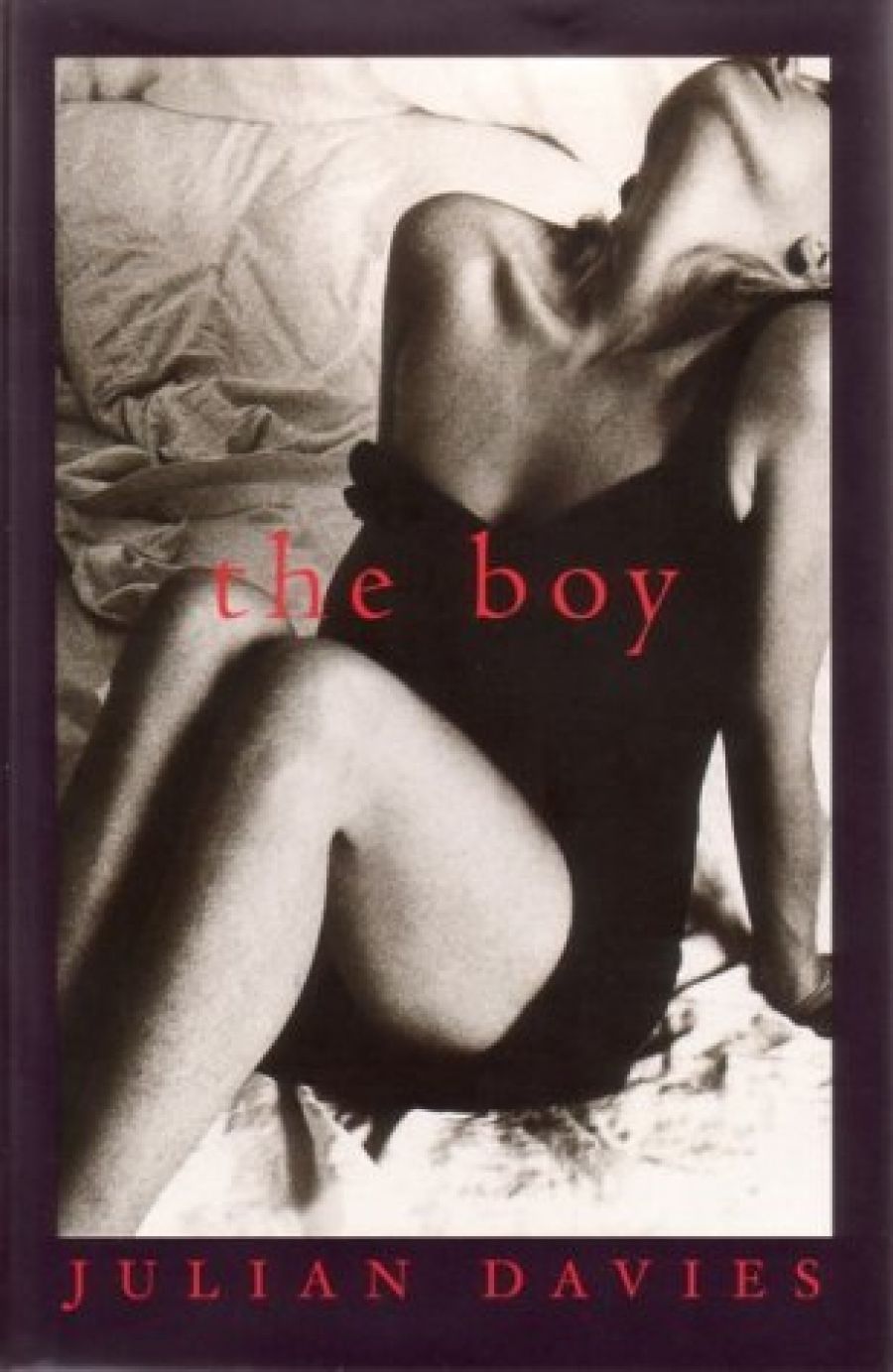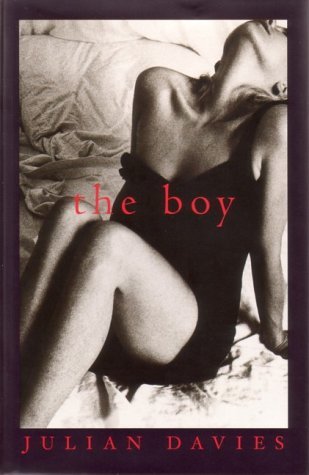
- Free Article: No
- Contents Category: Fiction
- Review Article: Yes
- Article Title: Borrowed Glamour
- Online Only: No
- Custom Highlight Text:
The heroine of Julian Davies’s fifth novel, The Boy, which is set in New York in 1956, is a nightclub singer originally from Australia. The boy of the title, almost half her age, is Zimzam Taylor. They are both outsiders. Marian’s life in New York is a kind of exile, in which she is closest to those she has left behind, such as her painter-husband André and her insistent, disapproving aunt Flavia, whom she left behind on the estate outside Canberra in order to sing in wartime London. Zimzam, as she learns when she picks him up and takes him back to her hotel, is an orphan whose family died in a fire. Now he is a creature of the city:
- Book 1 Title: The Boy
- Book 1 Biblio: Text, $24.95hb, 222pp
- Book 1 Cover Small (400 x 600):

- Book 1 Cover (800 x 1200):

Another night. The crowd was there on the street, as usual, when she began her walk back to the hotel. People were milling from shows, the clubs they had just left. Car horns blared, like music to her.
It was the same crowd but made up, no doubt, of different individuals. Except for the boy. He was there on the wall above the stairs to the subway. A crush of people, coats held close, descended behind him. She glimpsed him at some distance. What was it about him? A glowing cigarette drooped from his mouth. Approaching now, she watched his face. It was compact, the nose almost snub but handsome. And the rest of him – clothes grimy, legs dangling, and something about him that said that none of this mattered, assets or losses. Not to him, at least.
Marian is intrigued by him, protective of him and excited by him: she feeds him, clothes him and sleeps with him. They drive into the country, and she takes him up in a plane; they get involved in a creepy scene with the elderly owner of the hotel, who admires Marian and is used to getting his way. Marian starts to realise that her sexual recklessness may have gotten her into something she can’t control: Zimzam may not be as helpless as she would like to think.
Davies’s prose has a sheen and self-assurance that can produce the power that an erotic tale like this needs, but the book as a whole is only seductive some of the time. What is most vivid is Marian’s consciousness. The most finely perceived passages are the sex scenes, or when Marian silently broods on what exactly she is up to with this boy. When Zimzam stops being the object of Marian’s erotic ruminations and actually has to talk, things don’t work so well. Davies gets his body right, but can’t make the things that come out of his mouth especially plausible. Much depends on Zimzam’s unknowability and on Marian’s sense that he is both vulnerable and threatening. While you can see Davies signalling that we are to respond to him in this way, you don’t feel it. His character simply isn’t written sharply enough. It doesn’t help that he is given Australian locutions (e.g. ‘put the hard word on’) that stand out, or that their emotions, and the way they talk about them, have a contemporary ring to them. Zimzam is meant to come from the streets of postwar New York, but occasionally he sounds so self-aware, and his speech-patterns are so genteel, so literary, that you start to wonder if he doesn’t really come from Dawson’s Creek.
It is Davies’s failure to think his way fully into the material that keeps The Boy middling warm rather than hot. Erotic fiction, after all, is a kind of pastoral, and its demands on the imagination of the writer are exacting. You can see Davies trying for the rapt quality of James Salter’s A Sport and a Pastime or John Scott’s What I Have Written, but he never gets there.
The sweaty, sparkling city of The Sweet Smell of Success and Breakfast at Tiffany’s is barely present in this book. Davies presumably intends us to fill in the spaces ourselves from our collective memory. This spares us cackhanded period evocation, but Davies does so little with the milieu that you’re not really sure why the book should be set in New York in 1956 and not last week in Newtown, unless it is just to borrow a bit of glamour.
This kind of pretentiousness has marred Davies’s work in the past. Just as Revival House (1991) got bogged down in the narrator’s obsession with Henry Clay Frick – he of the museum – and with the associated theorising about the relationship between art and wealth, so here Davies makes sure to let us know that Walter Burley Griffin was a family friend of Marian’s, and that he was in fact the first man she even admired, back when she was a little girl. This could send you off after thematic red herrings about the Australian-American relationship, but really it’s just there to add tone.


Comments powered by CComment